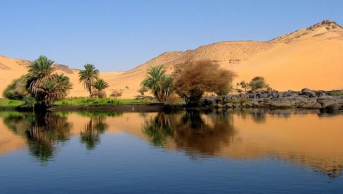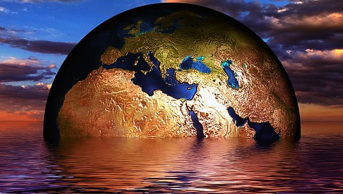A New Form of Virtual Water in the Middle East: Buying up Land for Agriculture

Increasing water scarcity triggers new solutions. A number of Middle East countries started to intensify their efforts towards buying large lands in a range of developing countries as well as most developed ones like the United States, where land prices are significantly high. This phenomenon is hitherto associated mostly with Gulf countries (United Arab Emirates, Qatar, Bahrain, Oman, Kuwait)where water is scarce most and the money to buy foreign land is relatively abundant. But there are also countries like Egypt and Libya which bought great amounts of land in Africa. They have a better water availability when compared with Gulf nations, but they have also bigger populations to feed. Finally Jordan has also become another new investor of land.
The Middle Eastern land-thirst is parallel with two basic findings in the literature. As Cecilie Friis and Anette Reenberg concludes: “Animal-based food production requires significantly more land than vegetarian diets, and in general, wealthier people consume more food than poor people”. Both observations fit in the paradigm of demand for foreign land in the Middle-East.
Sudan was the probably the first country Arab nations turned their eyes towards for their food futures. In 1970s Sudan was seen as a perfect country for agriculture with Nile and great land potential for irrigation. But making Sudan the breadbasket of Arab world did not materialize into realirt, while Sudan itself became a net food importer.
For many years Arab countries tried to grow their own food regardless of the water insufficiency. However, as this became unbearable amidst increasing demand and diminishing water supplies because of overexploitation of aquifers as well climate change related impacts; governments began to change course. Saudi Arabia is a prime example to this: after following the policy to grow own food for food security for long, in mid-2000s it decided to protect its already limited water resources. To feed its livestock, Saudi Kingdom became one of the greatest importers of animal feed in forms of hay and alfalfa. Despite this, around 85-90 percent of water use is still devoted to agriculture. Although more advanced techniques for irrigation are introduced, the Kingdom was not able to reduce this amount much, due to the very high evaporation rates in the Saudi desert.
Now a new phase has come when Saudis and many other oil-rich Gulf states decided to grow their animal feed abroad. Actually they- the governments- provided the push factor for the animal feed or animal breeding companies. A set of restrictions have been put on water use through bans on selected crops.
Therefore, they ended up buying large tracts in countries ranging from Africa to Latin America, and from Asia to North America. Companies tended to prefer lands where least amount of water-related regulations applied. They simply wanted to use as much as water they need to grow these water-intensive crops.
At first sight, all parties appeared to content with the deal. From the perspective of companies, they found a reasonable way out of the restrictions they faced home. They will be continue their business and retain their profitability. For farmers/landowners who sold their lands for Middle East companies, they earned significant amounts. For many local people, Arab companies brought an economic boost to their areas. And for investing countries, their vital water resources would not be wasted, and be used for non-agricultural uses.
However, this positive outlook is slowly giving way to a more perturbed situation. One of the reasons for this is certainly the risk of depleting water resources in the recipient region. Local people everywhere are becoming more aware of the approaching threat of water scarcity. Another reason originates from a well-known diplomatic principle of reciprocity. That is to say, many Gulf countries do not permit foreigners to own land in their countries, thinking of land -in conjunction with oil production- as a strategic asset. This is becoming an issue of contention, although developing countries are generally treating inflowing investments favorably.
To conclude, this emerging type of virtual water seems to become the most contentious one as time elapses. For many, this is the way water-scarce countries export their water problem abroad. From an other point of view, this is what globalization is about. For less advanced countries, it will take longer to become fully aware of the risks these land imports may engender. While companies can exploit this to their advantage, it is also the case that there are serious limitations in these countries which may put the businesses at risk: problems in infrastructure, lack of skilled labor, widespread corruption, and political instability. On the other hand, in developed countries, land purchases are becoming less welcomed due to risks they involve, greatest of which is the overexplotation of water resources.









